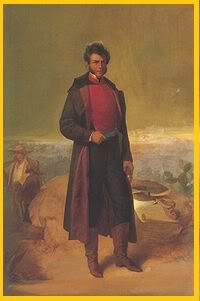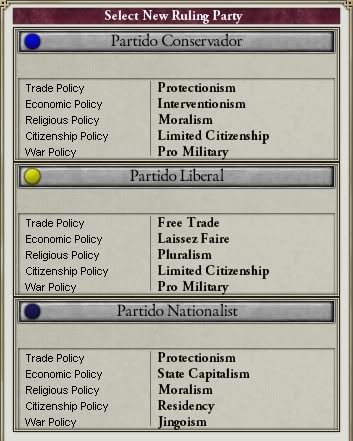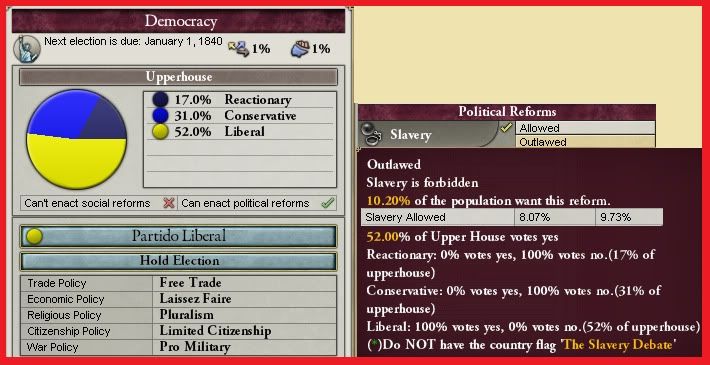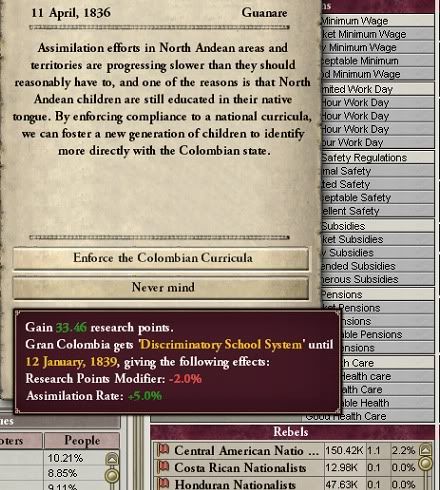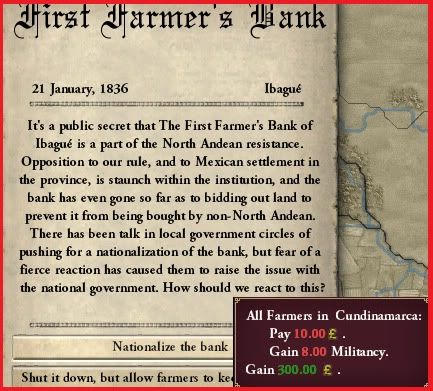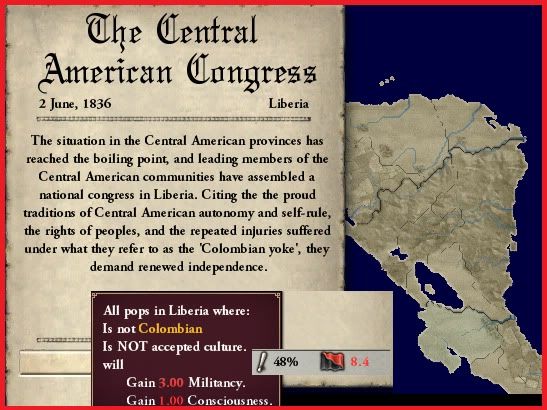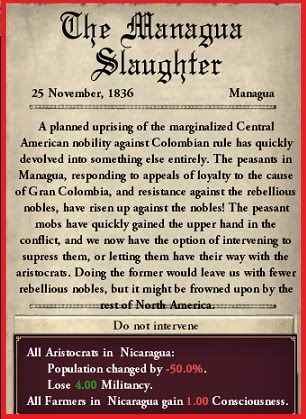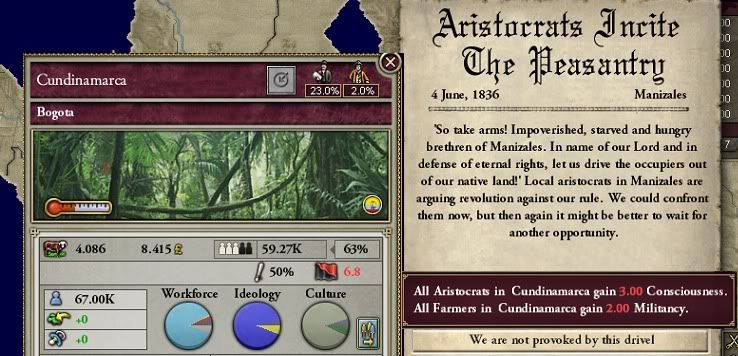Aguila Real
A History of the Republic of Gran Columbia
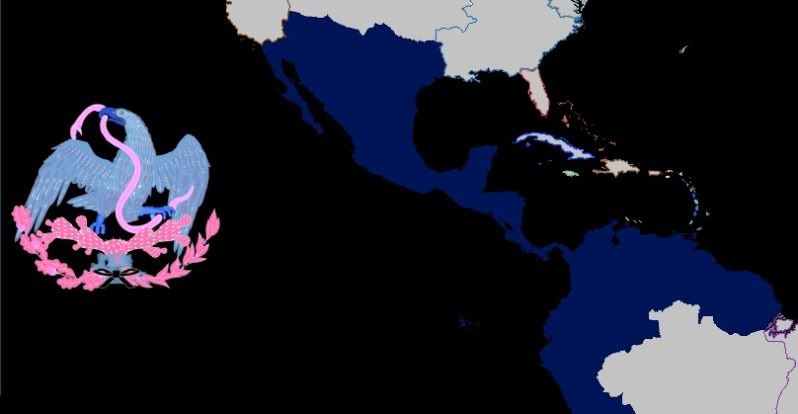
A History of the Republic of Gran Columbia

The first three hundred years of Gran Columbia can be summed up in three words; bloodshed, greed, and treachery. While Iberian scholars often assign this view of their colonies to the “Black Legend” created by the other Western powers as justification for their own actions against the Spanish realm, there can be no doubt that the civilizations of Mexico, Peru, and the Amazon were not swept aside with niceties. Further, the wealth produced for Spain in the Viceroyalty was not made by free men, but castes of slaves and serfs; only peninsulares (persons directly from Iberia or of direct Iberian descent) and the sons of the original conquistadors (along with a few, converted houses of native nobility) could true be considered free men in the modern sense. Don Hernan Cortez de Oaxaca, First Viceroy of Gran Columbia and the Southern Indies, established a feudal system in the New World that was even more rigid than that of the mother country. It was a system that could only survive through terror and deception in various forms.
It was only due to the crushing medieval backwardness of the colonies and the iron hold of mercantilist economies that such oppression was able to continued for three centuries. When the ‘Enlightened Monarchs’ began their colonies reforms in the 1760’s, trying to break the hold of the Church and the families of ‘the old blood’, it only served to quicken the process. The conservative powers were angered at direct royal interference after centuries of indifference and those supposedly being helped only saw ineffectual half-measures on their end. Most noted at the time was John X’s refusal to end the Spanish mercantile system (which contributed heavily to the general poverty of Gran Columbia), which served to spur the smuggling trade with the Anglo-French and Venetians.
The First German Revolution and its descent into a general war among the Great Powers were the inspiration and the opportunity respectively. The writer Antonio de Montana, who knew Weishaupt, Goethe, Montgelas, and others from his younger days being educated in Europe, followed the lead of his friends, penning the short essay “The Freedom of the Columbian” in 1788:
“Before Oaxaca and his line of vipers, and even before the Emperors of old, our ancestors lived in this country without bondage and without servitude, bowing, and scraping. They were truly free and came together only in bonds of brotherhood with the blessing of the old gods. This being true, to see the Columbian, no matter his supposed rank, be but a bondman for the lords of Hispania is a great same. Let us therefore all come together in fraternity and cleanse our land of this disease as has been done of late in the Germanies. The Columbian too can and shall stand free!”
The response of the people was slow, but by 1795 the flag of rebellion had been raised in every provinces of the Viceroyalty. The Viceroy himself, Pedro Cortez, tenth Marquis of Oaxaca, announced in June that year that he no longer “owed anything” to the Crown of Castile and Portugal. The universal eviction of royal forces was not the end as in the Scandinavian, Burgundian, and Anglo-French colonies to the north however. Now began a vicious ever-multifaceted civil war which lasted (with three truces and one major invasion attempt by Spain during the First Congress of Aachen, 1801) until 1810. It was then that the Republic of Gran Columbia was finally united and declared to the world. Its size and natural wealth made the powers of Europe consider it a great state in its own right, so much so that the Republic received a seat at the Second Congress of Aachen in 1812.
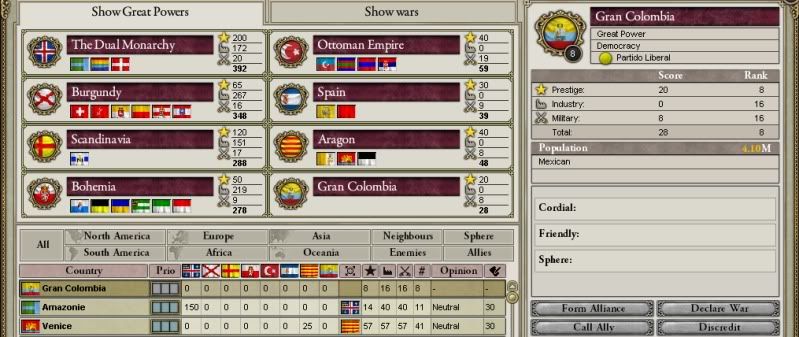
The powerful status of Gran Columbia in the early nineteenth century hid a rotten structure crumbling behind the pomp
At home, people knew differently. The Partido Conservador had triumphed and kept the old system for the most part in place, much to the horror of their fellow revolutionaries like de Montana. The temperamental liberator raised the flag of rebellion again in 1816 at Monterrey (with the support of Anglo-French settlers and mercenaries, whom the government had invited in to populate the sparse north), joined a year later by Simon Bolivar‘s revolt launched from Bogotá. Pedro Cortez, now recently elected President, ironically called on the newly formed Holy League (lead by Poland-Lithuania and Spain jointly until the latter’s collapse into revolution in 1816) for aid. The Europeans had no resources for such an expedition and despised the man who ask for it. By 1818, Cortez was reduced to barely holding the Valley of Mexico, so he fled the country for exile in Lotharingia. De Montana and the liberals rode into Mexico City victorious and in the 1820 Plan of Santa Fe, the country was divided into two respective spheres under de Montana and Bolivar. Though the Partido Liberal would remain in power till 1840, coups, adventures abroad, natural disasters, and apathy would combine to retard progress politically and economically.

Antonio de Montana became increasingly autocratic and paranoid in his later years, ending up in a feud with his counterpart Bolivar. This only came to a close with an assault on his palace near Veracruz on August 12th, 1828, in which the Liberator died with pistol and rifle in hand.
Last edited:


